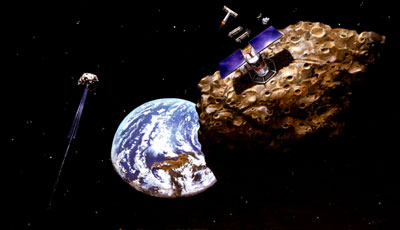Certain regions on Earth have had an outsized impact on trade in important commodities. For instance, the Middle East has been important because of the amount of oil some in the countries there. Without those huge oil reserves, much less global attention would have been paid to conflicts in that region. Some analysts now believe that some countries and some major corporations involved energy and commodities extraction and trade may turn their attention to the possibilities of the exploitation of space resources.
The United Arab Emirates and Saudi Arabia are working on their own space programs. They are also investing in private space companies that are focused on space commodities. One advantage these countries have is that they are close to the equator which reduces the amount of fuel needed to achieve equatorial orbit. When oil is not longer a vital energy source, if Middle Eastern oil exporters have not developed other sources of revenue such as space exploitation, they will suffer serious economic decline.
One very important resource for space exploration is water. Aside from the need for any astronauts to have water to drink and the protection from radiation that water affords, water can provide fuel for space exploration and exploitation. Water can be used as a propellant for spacecraft. It can be utilized in ion thrusters as an ionized vapor in the CubeSat Ambipolar Thruster. It can be heated and expelled as steam. Deep Space Industries Inc. is currently working on such a steam engine. And it can be split into hydrogen and oxygen by solar or nuclear power and then recombined to combust and provide thrust for a spacecraft.
Prospecting spacecraft could be built for a few tens of missions of dollars. It has been estimated that a spacecraft that could harvest minerals from asteroids could be built for around three billion dollars. This sum is equivalent to the cost of developing a major new mine on Earth. Minerals mined from asteroids could be used for manufacturing of things in space that require the absence of gravity or would be used in spacecraft, space stations and/or power stations. Some very valuable minerals such as gold or platinum might be shipped back to Earth.
Noah Poponak said in an April 4 research note from Goldman Sachs Group Inc. analysts says “Space mining is still a long way from commercial viability, but it has the potential to further ease access to space. Water and platinum group metals that are abundant on asteroids are highly disruptive from a technological and economic standpoint.”
Tom James, a partner at energy consultant Navitas Resources, expects space companies to begin launching satellites to search for rare gases and valuable metals in asteroids in the next five years. He thinks that mining may begin as soon as eight years from now. It has been estimated that one asteroid might contain over thirty thousand tons of platinum compared to the one hundred and eighty tons of platinum that are mined each year on Earth. One possible impact of asteroid mining would be a major drop in precious metal prices such as platinum which is currently trading futures at almost a thousand dollars an ounce.
Artist’s concept of an asteroid mining operation:
